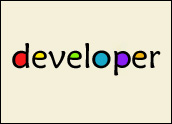
“Web 2.0” is one of those buzzwords that gets applied to practically every new technology and idea these days, with the inherent suggestion that they represent a new generation, a new way of thinking — a paradigm shift.
Most often the term refers to social networking and user communities that facilitate collaboration and sharing — what some perceive as a second generation of Internet functionality. However, the term is nothing more than “a marketing idea used to sell books,” Slashdot founder Rob Malda believes. In fact, “what people are calling Web 2.0 is just the realization of what the Internet was always meant to do,” he says.
Slashdot.org, founded in 1997 with the aim of delivering “News for nerds, stuff that matters,” was one of the first Web sites to incorporate reader input in a significant way, and is widely considered one of the earliest precursors of the blog. With more than a quarter-million readers each day and about 80,000 articles, Slashdot is now probably one of the oldest exemplars of Web 2.0 — Malda’s comments notwithstanding.
‘Commander Taco’ Talks
LinuxInsider recently spoke with the 31-year-old Malda — also known as “Commander Taco” — about the Internet, Web 2.0 and what it all says about today’s users.
LinuxInsider: Your site is often considered one of the first predecessors of what we know today as the blog. What led you to develop Slashdot with such a foresightful and heavy emphasis on reader comments?
Rob Malda:
I’ve always been a part of communities, from BBSs (bulletin board systems) in the ’80s to Usenet to mailing lists. It never crossed my mind not to have reader comments. The discussion is just part of it.
LinuxInsider: Who were the early users of Slashdot — what kind of people were they, and why do you think Slashdot appealed to them?
Malda:
They were mostly Linux users familiar with low-level software development — computer science students, Web developers and people like that. It appealed to them for the same reason it appealed to me — nobody else was sharing this information in an aesthetic way. There were a few other sites doing similar things, but Slashdot looked a lot nicer — the others were clearly designed by engineers. They were also even more niche-specific than we were. In addition to being a Linux site, we’ve always been about the culture and joy of the geek lifestyle as well.
LinuxInsider: How do you think today’s users differ from those in Slashdot’s early days?
Malda:
I think we have a more mainstream demographic now. We’re probably older, balder and a bit more cynical. Back then, we were probably 50 percent desktop Linux users. That percentage is much smaller now, though we are still early adopters. My audience upgraded to Firefox 2.0 within days, for example. We’re probably one of very few sites where Internet Explorer is the minority browser, and we do all of our development accordingly — Firefox first, Explorer last.
LinuxInsider: I know moderation is a controversial topic on the site — could you tell me a little bit about how it works, and why you’ve chosen to do it the way you do?
Malda:
Every day, a few thousand of our typical users are randomly given 5 moderation points to “spend” promoting or demoting comments in our forums. Readers choose a base threshold as a minimum score. This prevents individuals from manipulating the system excessively, and makes traditional spam almost impossible. It also does an excellent job of controlling the amount of time any individual reader or moderator is required to spend on the system.
LinuxInsider: What is karma, and how does that work on Slashdot?
Malda:
Any time you do anything good or bad, the system increases or decreases a score. It tracks people who are trying to screw with the system, and minimizes the damage they can cause.
LinuxInsider: So, how do you define Web 2.0?
Malda:
First of all, I hope we’ll all stop calling it Web 2.0 soon. Web 2.0 doesn’t actually exist. Social networking has existed for years and years; all that’s happened is that now more people have broadband, so they can tap into it. It’s not a sequel — it’s just the logical evolution of the system. All the excitement about Web 2.0 is like being amazed when the penthouse finally gets built at the top of a skyscraper — did people think we weren’t going to bother after all that?
LinuxInsider: How has Web 2.0 changed user expectations?
Malda:
They expect a more interactive experience. Can you imagine going back to a Web mail client from 1999 in a post-Gmail world? But this is about bridging the Web with traditional desktop applications. The social possibilities are much more interesting.
LinuxInsider: Where do you think Web 2.0 technologies are heading — where will they take us in the next 20 or so years?
Malda:
I think we’ll see better integration through all the systems you use, from cell phones to Web pages to laptops to e-mail clients to TVs. Eventually these systems will meld and unify. You’ll be able to use different devices to access the same data from the Internet.
Also, your discrete bits of data online will start to connect. Your calendar, be it on your PC, cell phone or a public terminal, will know everything you need it to know, from the release date of the next TV show you want to download to your dentist appointment. And it will become increasingly easier to get recommendations for all types of content from friends, strangers, or networked webs of both.
LinuxInsider: What about user-generated content — do you think traditional news sites, with trained journalists, are becoming obsolete?
Malda:
No, I think all content exists along a spectrum from RSS feeds to blogs to The New York Times to Time magazine. I think there is value to be offered at each point along that spectrum. Some things are fast, some provide time to give us more context and greater understanding. Others are strong on an individual’s opinion. Others are harder to deceive. It will take us several more years to figure out how all the new pieces fit together, but we have a few years to see how it will all work out.




















































